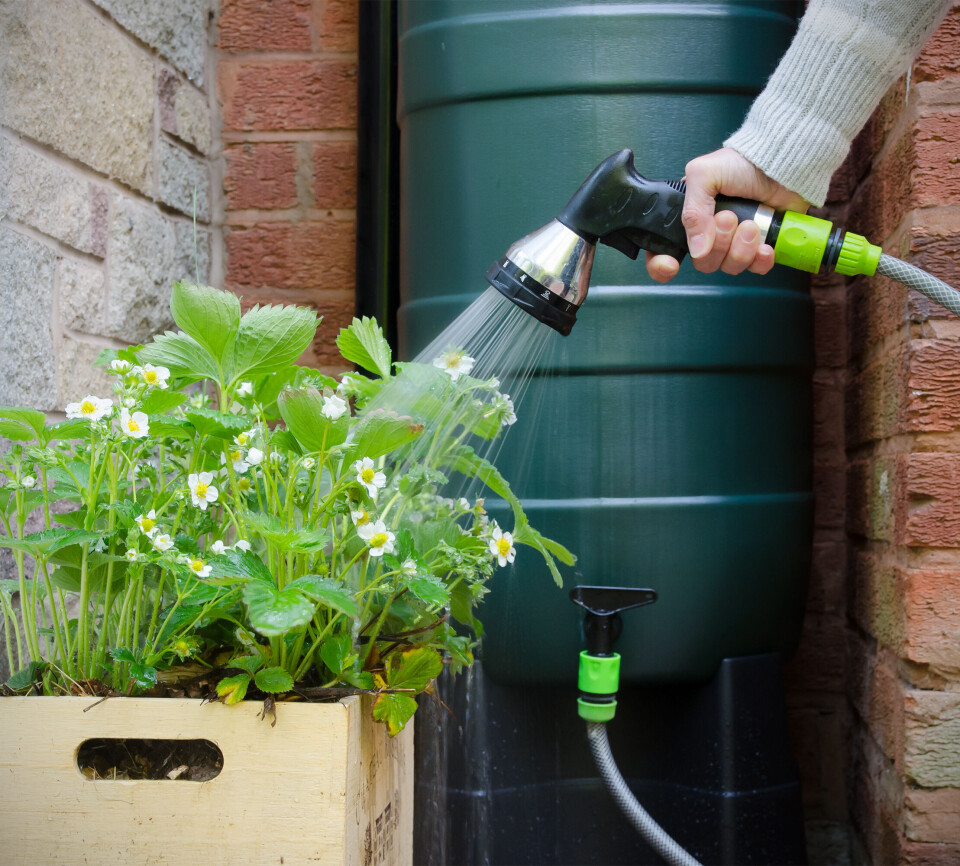-
Canal du Midi closed to boats until March due to low water levels
Extended drought in the south of France means boating only permitted under exceptional circumstances
-
Another French village bans drinking water for vulnerable people
Official advice has been issued on who is affected by the ban and why
-
Water restrictions extended in southern French department as drought continues
Pyrénées-Orientales remains in a state of drought as groundwater levels continue to fall
Dordogne’s €50 grant for water butts: What help in my part of France?
Some parts of France are offering financial help to buy rainwater collectors to ease the pressure on water supplies

Residents in Dordogne can benefit from a €50 grant to help them buy a rainwater collector, as a means to save water and reduce the strain on supplies.
Germinal Peiro, president of the department, announced the financial assistance this week.
The aim is for residents to buy 1,000-litre collectors, encased in metal and designed to sit outside to collect rainwater. The water can then be used to water gardens, wash vehicles, feed animals, or even do clothes washing. The collectors cost around €120 on average.
In order to receive the money, residents must show a bill for a collector of at least €100 - dated after June 30, 2023 - to the relevant council department. The first 1,000 residents of the department who do this will receive the €50 cheque.
The scheme will cost the department €50,000.
What other areas offer financial help for rainwater collectors?
Some other regions, departments, and councils have also announced financial assistance schemes to help people install the collectors.
These range from vouchers and cheques of €20 to as much as €500, or up to 50% of the total price. In contrast, some departments do not offer financial help, but instead have a range of collectors at preferential prices.
Ile-de-France, the region around Paris, is even offering up to €20,000 depending on the collector you install.
Read more: French region offers €20,000 for rain collectors as popularity surges
The list below shows the departments within which help is available. In most cases, it is just individual communes that offer financial assistance, rather than the whole department. You can find a comprehensive list here (in French). Be sure to check with your local mairie before purchasing anything.
-
Auvergne-Rhone-Alpes - Ain, Ardèche, Puy-de-Dôme, Rhône, Savoie, Haute-Savoie
-
Bourgogne Franche-Comté - Côte-d’Or, Saône-et-Loire
-
Brittany - Côtes-d’Armor, Finistère, Ille-et-Vilaine
-
Centre Val de Loire - Indre, Indre-et-Loire, Loir-et-Cher, Loiret
-
Grand Est - Aube, Marne, Haute-Marne, Meurthe-et-Moselle, Moselle, Bas-Rhin, Haut-Rhin, Vosges
-
Hauts-de-France - Nord, Oise, Pas-de-Calais
-
Île-de-France - Paris, Seine-et-Marne, Yvelines, Hauts-de-Seine, Seine-Saint-Denis
-
Normandy - Calvados, Orne, Seine-Maritime
-
Nouvelle-Aquitaine - Creuse, Gironde, Landes, Pyrénées-Atlantiques, Deux-Sèvres, Vienne
-
Occitanie - Ariège, Gard, Lozère, Pyrénées-Orientales, Tarn
-
Pays de la Loire - Loire-Atlantique, Maine-et-Loire, Sarthe, Vendée
-
Provence-Alpes Côte d’Azur - Hautes-Alpes, Alpes-Maritimes, Var
What is the current drought situation in France?
The list below shows departments where at least one commune is under alert. It does not necessarily mean that the whole department is affected.
Read more: How bad is the drought in France? See restrictions in your department
Code 4 ‘crisis’ alerts are in place for: Aude, Côte-d'Or, Dordogne, Eure-et-Loir, Indre, Indre-et-Loire, Loire-Atlantique, Loiret, Oise, Pyrénées-Orientales, Sarthe, and Vendée.
Code 3 ‘heightened alert’ are in place for: Alpes-Maritimes, Bouches-du-Rhône, Cher, Deux-Sèvres, Dordogne, Drôme, Eure, Hérault, Indre, Indre-et-Loire, Loire-Atlantique, Loir-et-Cher, Loiret, Lot-et-Garonne, Maine-et-Loire, Nièvre, Oise, Pyrénées-Orientales, Saône-et-Loire, Sarthe, Seine-et-Marne, Vendée, Vienne, Yonne, and Yvelines.
Code 2 ‘alert’ are in place for: Ain, Aisne, Alpes-Maritimes, Ardèche, Aveyron, Bas-Rhin, Charente, Cher, Côte-d'Or, Creuse, Dordogne, Eure, Gard, Haute-Saône, Hérault, Indre, Indre-et-Loire, Loir-et-Cher, Loiret, Lot-et-Garonne, Maine-et-Loire, Mayenne, Meurthe-et-Moselle, Nièvre, Oise, Pyrénées-Atlantiques, Pyrénées-Orientales, Saône-et-Loire, Sarthe, Seine-et-Marne, Somme, Territoire de Belfort, Var, Vaucluse, Vendée, and Yonne.
Most of the rest of the country is on code 1 warning level.
Tips on how to buy a rainwater collector
Various sizes exist, with one of the biggest reaching up to 5,000 litres. However, a collector can still be effective at 1,000 litres or smaller.
The cost is typically between €50-100 per 300 litres.
Tips for buying the right size for you include:
-
Calculate the savings you will make and the size you need (such as how many litres you could save versus your usual usage)
-
Consider the type of tank you may need. Some are underground, partially buried, or above ground. Most are made of concrete or polyethylene.
-
Check for local aid and vouchers to contribute to the cost, and check the requirements before you go ahead.
-
Consider safety and covering measures. This includes installing a mesh or grid to stop insects and animals from getting in, and algae from forming. You can also install a filter.
If you intend to use the water indoors, be aware of the water usage rules. You can only use the water indoors for three tasks: Filling toilet flush tanks, washing floors, and washing clothes, as long as you use a suitable water treatment system. You must declare any indoor use with une déclaration d’usage at your Mairie.
Our previous article here shows you more practical tips for buying a collector.
Related articles
Map: The 28 French departments at high risk of drought this summer
Neighbours tell on each other as drought rules bite in southern France
Rainwater, wells: eight questions about water restrictions in France
























